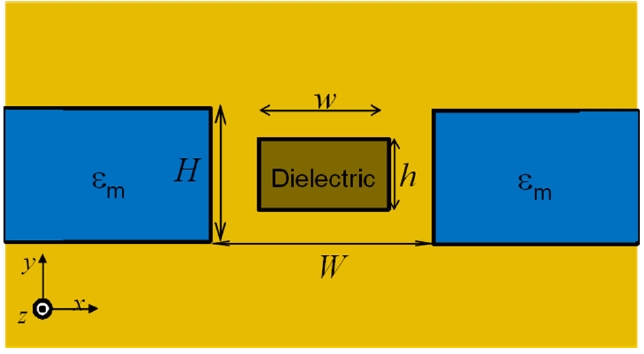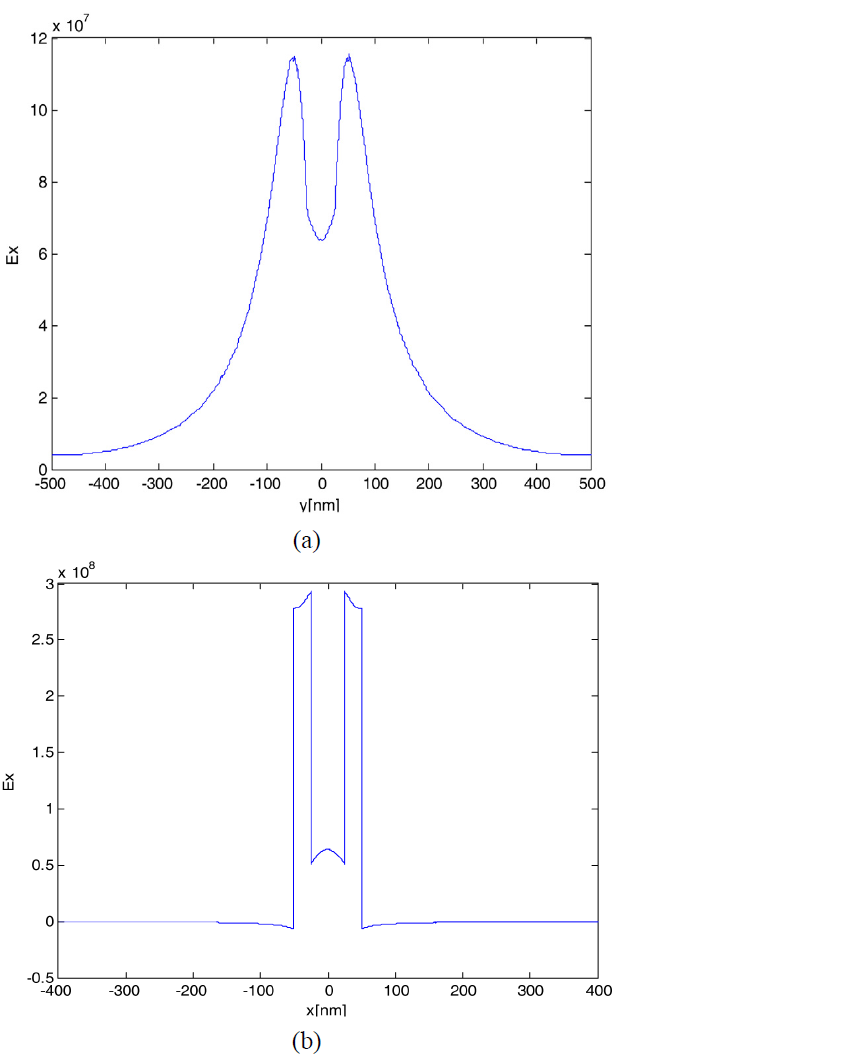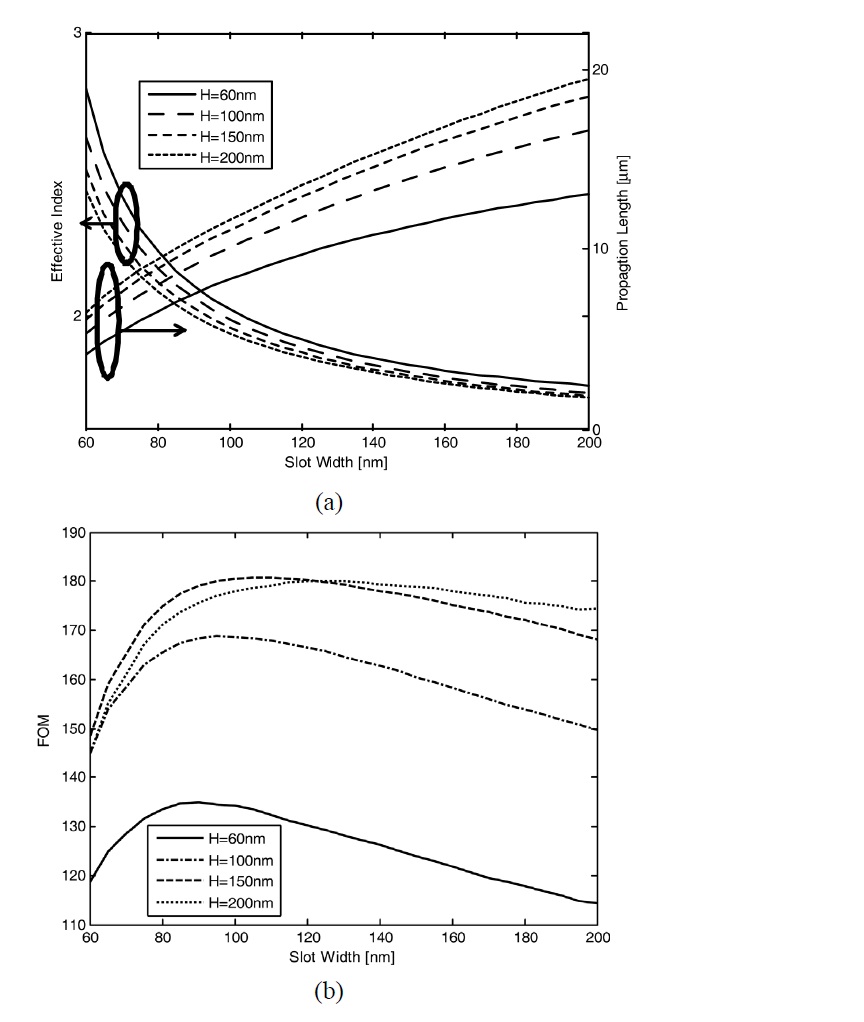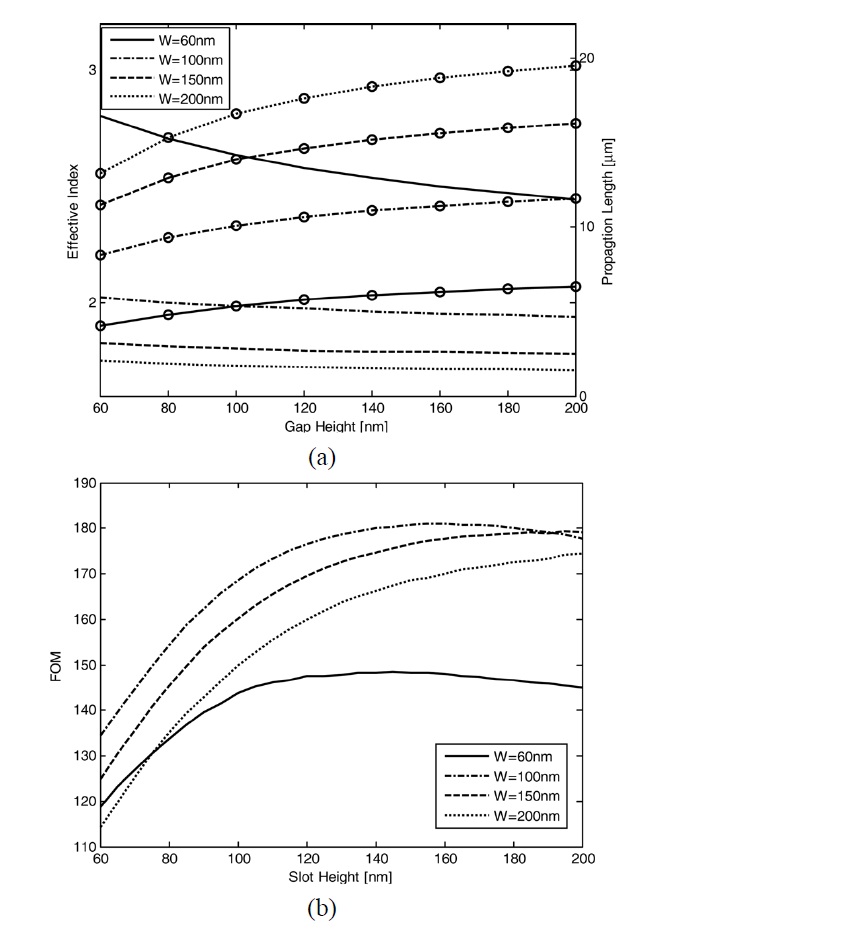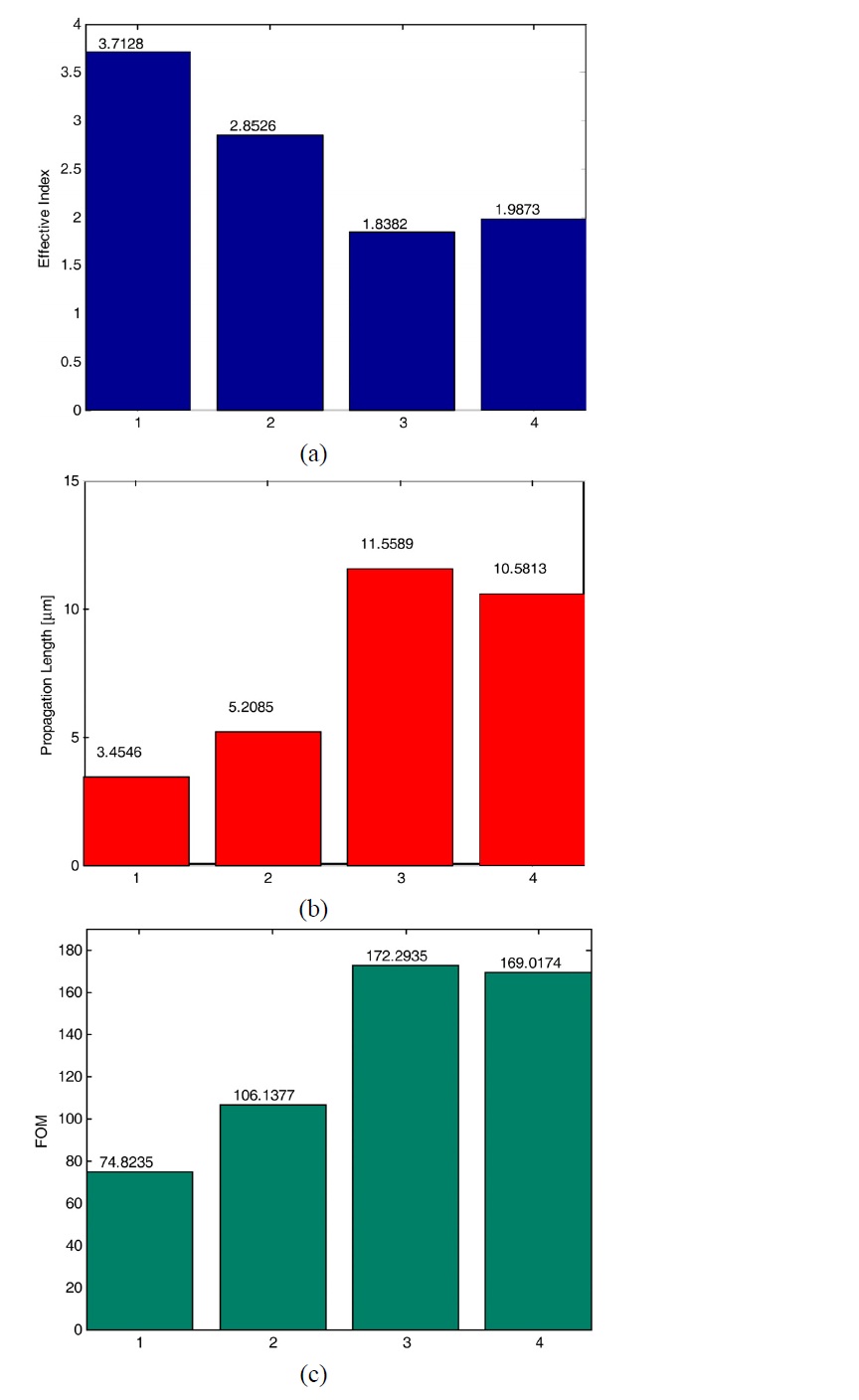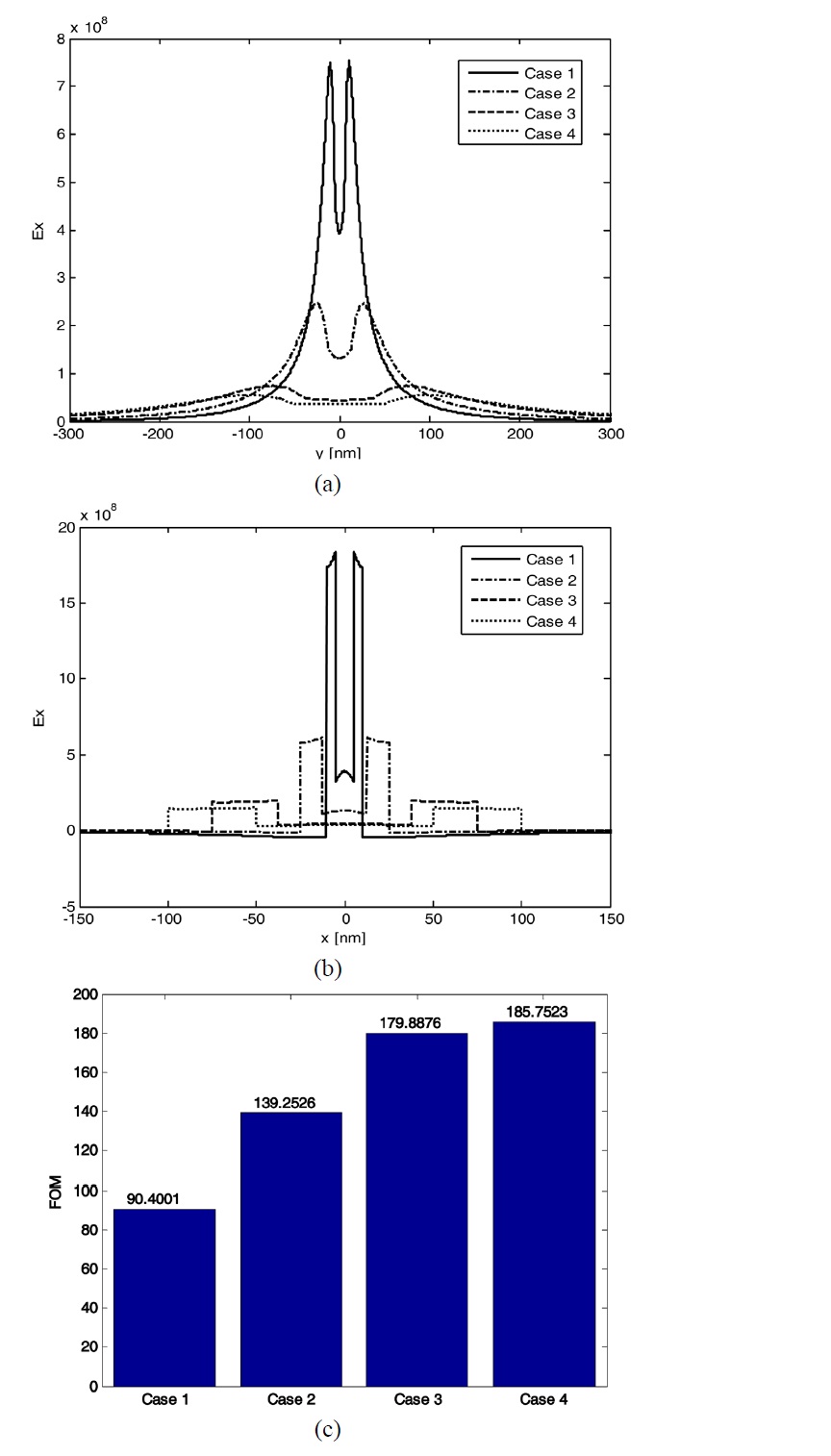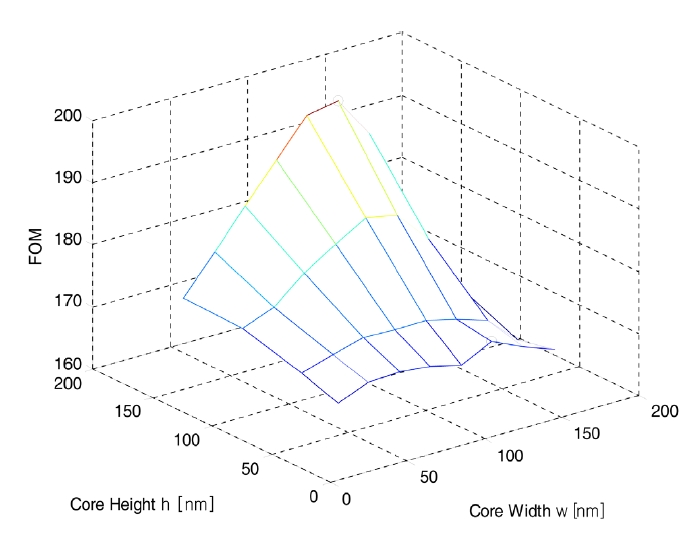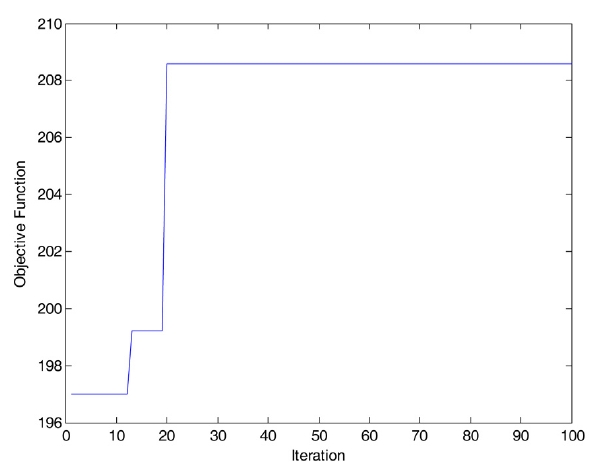



Plasmonic waveguides have been considered promising candidates to guide light beyond the diffraction limit by using a surface plasmon-polariton that propagates along the interface between a metal and a dielectric medium [1]. Various types of plasmonic waveguiding structures have been proposed, such as insulator-metal-insulator (IMI) [2, 3], metal-insulator-metal (MIM) waveguides [4-6], metallic nanowires [7], and metallic nanoparticle arrays [8].
However, the tight confinement of propagating light power in plasmonic waveguides is fundamentally associated with high ohmic loss in the metal, and so plasmonic waveguides have an intrinsic trade-off between field confinement (mode size) and propagation loss. To overcome this problem, several different waveguides have been suggested [9-15]. Feng et al. reported that a partial dielectric-filled slot waveguide improves the field localization while keeping the propagation loss low [16]. However, their design procedure for improving the propagation characteristics was sequential and therefore non-optimal design parameters may have been selected.
In this paper, we focus on the dielectric-filled slot plasmonic waveguide and theoretically investigate the propagation characteri-stics at the telecom wavelength of 1550 nm. The mode field and its propagation characteristics were obtained by use of the finite element method (FEM). We first examine the effective index and propagation length for different geometries. The symmetric geometries are employed here for efficient coupling with other photonic structures. We present a systematic design procedure that is applicable to the shape optimization of a dielectric-filled slot waveguide using the genetic algorithm (GA). We obtain a plasmonic waveguide that has high confinement and a moderate pro-pagation length with optimal propagation characteristics.
II. PROPAGATION CHARACTERISTICS OF DIELECTRIC-FILLED PLASMONIC SLOT WAVEGUIDES
Figure 1 shows a schematic diagram of the dielectric-filled plasmonic slot waveguide. The structure consists of a symmetric plasmonic slot waveguide with a dielectric core in the slot between metals surrounded by an infinite homo-geneous dielectric cladding. The slot has a width
Fig. 2(a) and 2(b) show the field distributions of the dominant electric field component, for a dielectric core of
and horizontally, respectively. In the dielectric-filled plasmonic slot waveguide, the electric field is focused between the metal and the dielectric core owing to the charge distribution
on the edge of both metal regions. This geometry thus operates like a capacitor with a dielectric filling in that the electric field has a dominant component in the x direction (ratio of the peak values
In Fig. 3(a) we show the effective index
In Fig. 3(b) we show the figure of merit (FOM) of the propagating mode of the slot plasmonic waveguide as a function of the slot width
where
In Fig. 4(a) we show the effective index
plasmonic waveguide as a function of the slot thickness
In Fig. 4(b) we show the FOM of the propagating mode of the slot plasmonic waveguide as a function of the slot
thickness
To further investigate the effect of the dielectric core and the slot on the propagation characteristics, we need to analyze the effective index, propagation length, and FOM for different dielectric-filled plasmonic slot waveguides. The structures we studied here are characterized by the following parameters: a common metal slot of width and thickness
We have explored further different geometries with square slots and dielectric cores since we obtained the maximum FOM for case 3, which was a geometry with a square slot and core. The geometrical values analyzed here are as follows:
For this optimization problem, sequential quadratic pro-gramming (SQP), a nonlinear programming technique which is iterative and uses the gradients of the objective and constraint functions, was used. [19]. One of the disadvantages of using SQP and other approaches based on gradient information is that it is not known whether the final solution denotes the global optimum or simply a local optimum unless the objective function is convex in design parameter space. In Fig. 7, we show the variation of the FOM with the height
the objective function. In the present case, in order to search for the global maximum, we employ a genetic algorithm [20-21].
To design the shapes of the dielectric core and metal slot in the dielectric-filled slot waveguide, we take the objective function as the FOM defined earlier, which combines the performances of field confinement and long propagation length and uses them to determine the optimal parameters.
We solve the following optimization problem:
Maximize FOM(x)
where
denote the lower and upper bounds of each design variable, respectively. The condition of is employed to meet the shape requirement that the dielectric is to be inserted into the metal slot. The lower and upper search bounds of the design parameters are 10 nm and 200 nm, respectively.
In the genetic algorithm, the initial population is created randomly. Crossover and mutation are performed based on random numbers. As a result, the genetic algorithm performs differently for each run under the same analysis conditions. Optimization using the GA is performed 100 times, each with a population size of 10, with a crossover rate of 0.2, and hence the mutation rate was 0.8. In Fig. 8, we show how the genetic algorithm optimizes the objective function as generations proceed. The optimal parameters are
We investigate the propagation characteristics of the dielectric-filled plasmonic slot waveguide. We employ the FEM and examine the effect of the slot dimensions on propagation characteristics such as the effective refractive index, propagation length, and a FOM combining both confinement and loss effects. The field distributions of the propagation mode for the slot waveguide were investigated numerically in detail. Furthermore, we carried out optimization of the waveguide slot for high mode confinement and a long propagation length, between which there is an intrinsic tradeoff with the design parameters including the width and height of the core and the width and thickness of the metal slot. We made a comparison between SQP and GA approaches and found that GA is an efficient and powerful approach to the optimization since it is not known whether the final solution denotes the global optimum or merely a local optimum unless the objective function is convex in design parameter space. The approach proposed here was found to be useful and applicable to designing highly integrated nanometric optical circuits.
